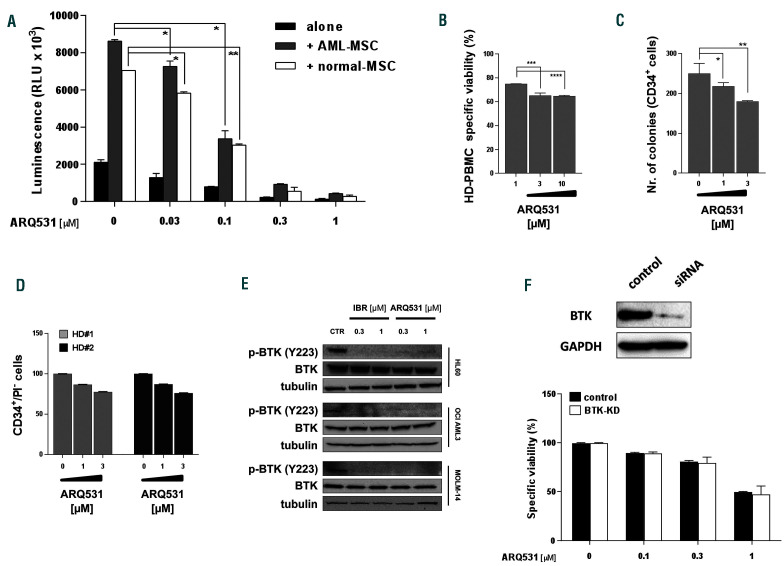Figure 2.
ARQ531 triggers anti-acute myeloid leukemia toxicity regardless of BTK activity and presence of stromal cells but preser ves normal hematopoietic stem cells. (A) Viability of OCI-AML2 GFP/luc+ cells treated with ARQ531 for 48 h, alone and in the presence of normal mesenchymal stem cells (MSC) (blank) or acute myeloid leukemia (AML)-MSC (gray) stroma, measured by a luciferase-based luminescence assay. Data are represented as mean ± standard deviation (SD) in all histograms (n=3). 0.02<*P<0.03; **P<0.05. (B-D) Healthy donor (HD)-derived hematopoietic precursor (BM-CD34+) and peripheral blood mononuclear cells (PBMC) were exposed to increasing doses of ARQ531, and clonogenic abilities (C) or viability (B, D) were calculated. Colony formation of ARQ531-treated cells (CFC) was measured after 2 weeks. Viability was calculated as propidium iodide (PI)-negative cells among the CD34 + population. Data are represented as mean ± SD (n=3); unpaired t test, ***P<0.001, ****P<0.0001. (E) Western blot showing that ARQ531 treatment effectively abrogates the BTK signaling cascade in three different human AML cell lines (HL60, OCI-AML3 and MOLM14) following 24 h of treatment. The effect of ibrutinib is also shown as a positive control. (F) Viability of BTK-silenced (nucleofected with specific siRNA targeting BTK) or control HL60 cells (siRNA scramble) treated with increasing doses of ARQ531 for 48 h. Data are data represented as mean ± SD in all (n=3).

